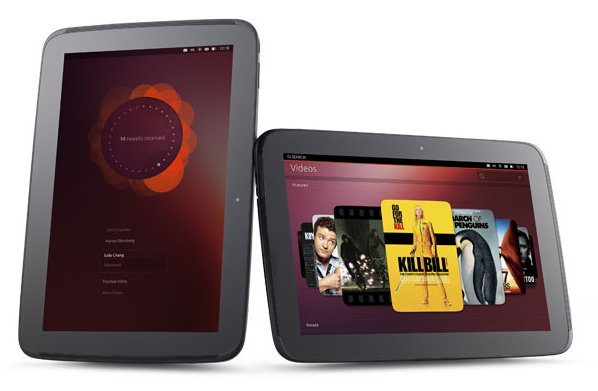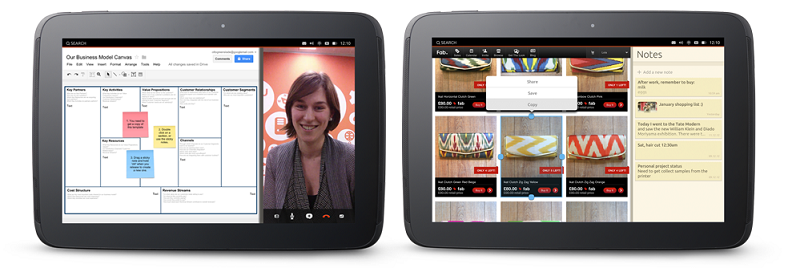Canonical just can’t stop surprising us with its new announcements. From out of nowhere, the company announced the Ubuntu for Phone OS at the start of the year, before announcing that a bootable image of the OS will be available February 21 (tomorrow!) for both the Galaxy Nexus and Nexus 4 smartphones. And once again, Canonical has come out of the blue with Ubuntu for Tablet.
Head on after the break for a the low down on Ubuntu for Tablet, as well as a quick demo video from Canonical.
With nothing more than a launch timer countdown that appeared two days ago on its website, Ubuntu for Tablet OS is another step in Canonical’s “device convergence” concept. Featuring a radical new tablet-optimised UI, Ubuntu for Tablet OS shares the same gesture-centric approach as Ubuntu for Phone, and is instantly familiar to those on Ubuntu desktops. Interestingly, as the demo video from Canonical shows, Ubuntu for Tablet has a similar feature as Windows 8’s Snap View called Side Stage, where two applications can run simultaneously on the same screen. It also has native support for multiple accounts, as well as a guest mode.
[youtube width=”600″ height=”350″]h384z7Ph0gU[/youtube]
More interestingly, when docked to an Ubuntu tablet a la ASUS Padfone, Ubuntu phone apps can run natively on the tablet alongside tablet apps. Hence, it is possible to make video calls from the phone app while simultaneously watching a video on the tablet’s media player on the tablet interface. Canonical also goes a step further than ASUS with its device convergence, where if users connect a mouse and keyboard to the Ubuntu tablet, it automatically transforms into the full desktop Ubuntu experience, and is able to run Windows apps as a thin client. In concept, it certainly surpasses that of Microsoft’s efforts with its convergence efforts with Windows 8 and Windows Phone 8, but naturally, it may be quite different in reality.
Just like Ubuntu for Phone, Canonical has not announced its plans for its own tablet just yet, although it has announced the hardware requirements for the Ubuntu tablet: a dual-core Cortex A15 processor with 2GB of RAM is the minimum requirement, with more processing power needed for the “high end” enterprise tablet for the full desktop convergence feature. Canonical has also added support for the two Nexus tablets, the Nexus 7 and Nexus 10. As another pleasant surprise, the Ubuntu Developer Preview for Tablets will be available for download for the two tablets tomorrow via its developer website. Ubuntu for Tablet will also be showcased at Canonical’s booth at next week’s Mobile World Congress.
(Source: Canonical via The Verge)
Follow us on Instagram, Facebook, Twitter or Telegram for more updates and breaking news.




